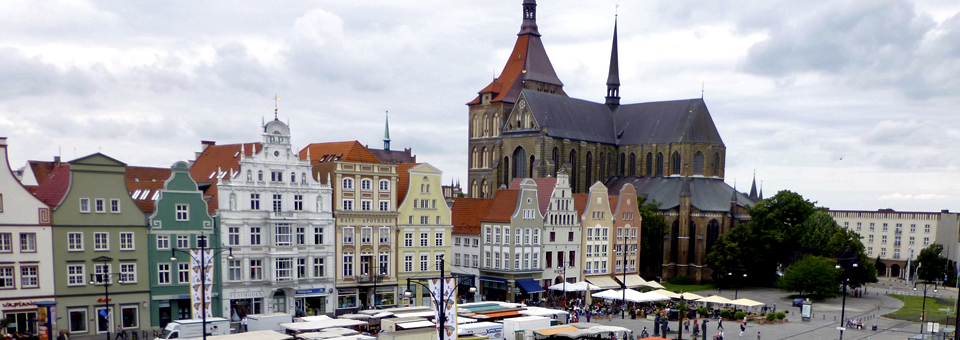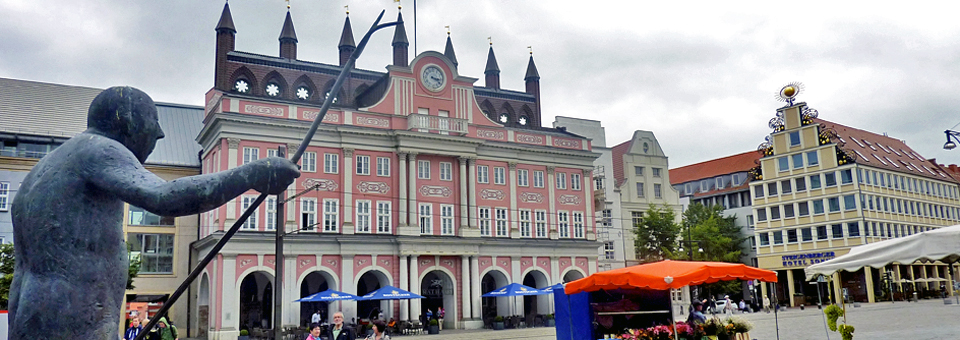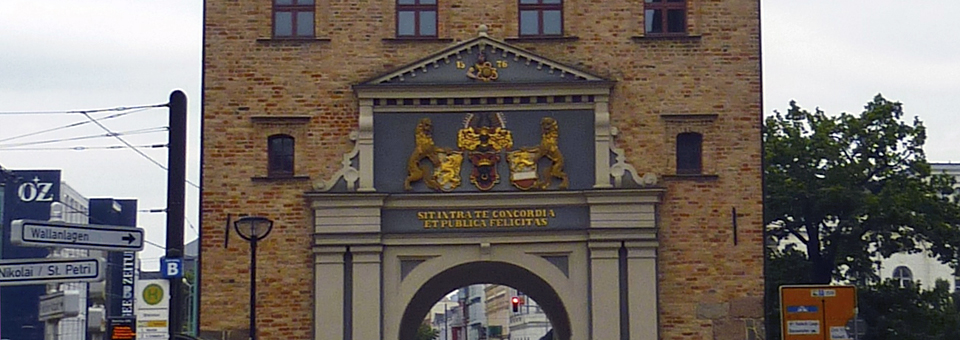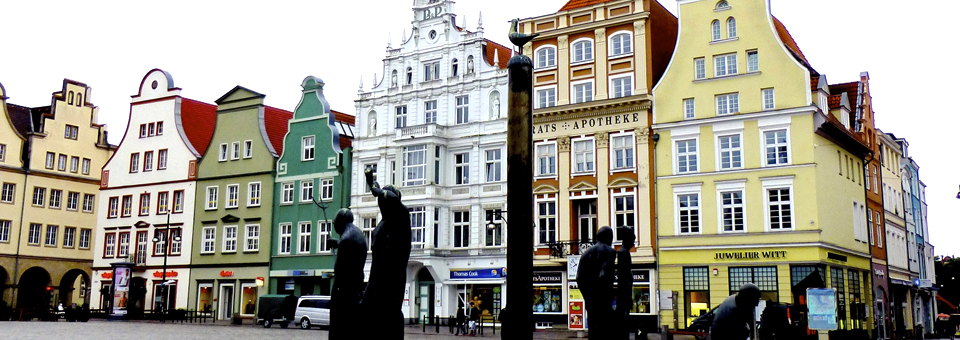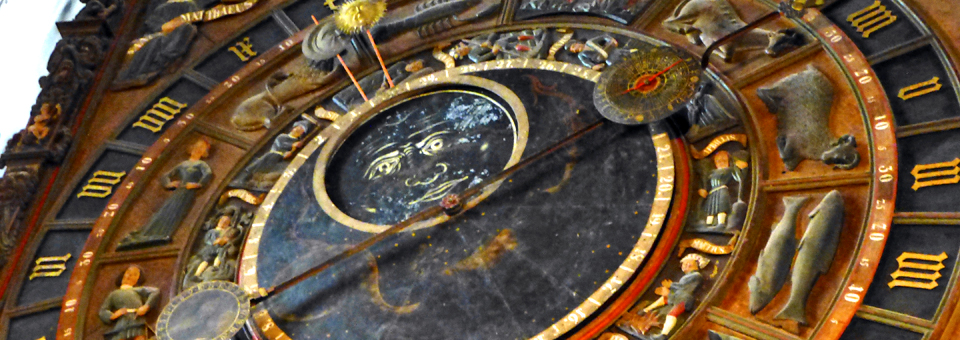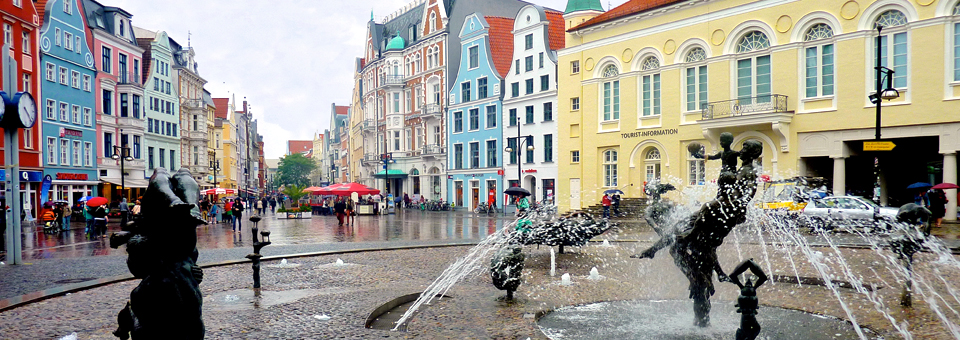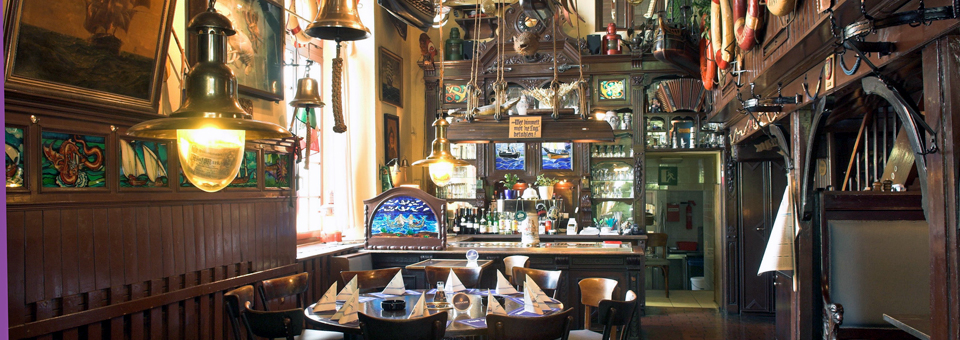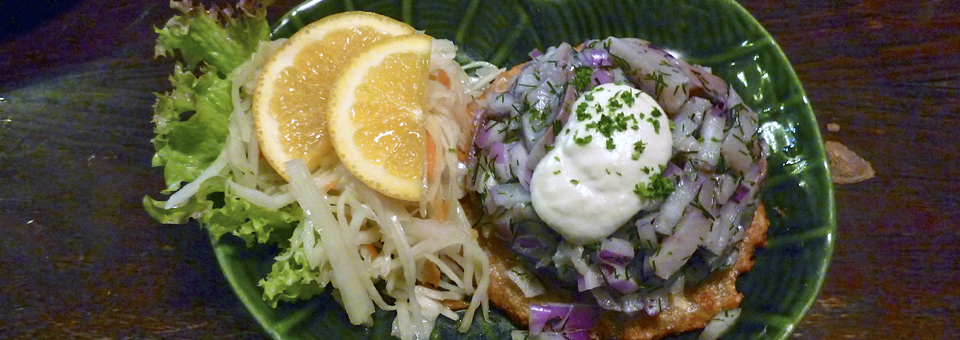Rostock, Germany
Rostock prospered for four centuries in the Middle Ages as part of the powerful Hanseatic League.
This league began as an alliance of Northern German merchants for mutual protection and advancement of trade relations grew to an unparalleled 14th century politically powerful league of about 200 cities and towns.
Rostock is on a river and had a nearby coastal settlement for harbor entry and to guard against invaders. The historic Old Town has been meticulously restored, and the coastal defense area, Warnemunde, has become delightful seaside resort.
We used our Rail Europe German Rail Pass to travel to Rostock, then took a colorful tram to our hotel at Neuer Markt, a marketplace since 1250.
Our room at the Steigenberger Hotel Sonne overlooked a variety of medieval gabled houses, a 13th century church, and a Gothic town hall with a grand Baroque facade.
The hotel’s restaurant and bountiful breakfast buffet teemed with a wide selection of Baltic seafood and specialties.
Rostock’s name derives from Roztoc, meaning “broadening of the River” from the time when Slavic tribes lived by the Warnow River.
It became a town in 1218 and was once surrounded by a nearly 12,000’ long wall with 22 gates, four of which remain.
It rose in just 150 years to became one the largest and most important cities of the Holy Roman Empire by exporting its beer and salted fish.
The University of Rostock, “The Light of the North”, was established in 1419 and is the oldest university in northern Europe. Astronomer Tycho Brahe wore a silver nose after losing part of his in a 1566 duel over a mathematical formula while a student here. The nearby Cultural History Museum was a Cistercian convent founded in 1270.
The Zest for Life fountain depicts nude beachgoers enjoying one of the few freedoms allowed under Communism.
St. Marien Church was built in brick Gothic style in 1230 when Hanseatic Rostock wanted a grand church to rival Lübeck’s. There’s a bronze baptismal font from 1290, a Renaissance pulpit, a Baroque organ from the 1770s, the Duke of Mecklenburg’s elegant balcony, magnificent stained glass window, and elaborate burial niches of wealthy families.
The church’s highlight is the astrological clock built by Hans Düringer in 1472. After he built one in Danzig, officials blinded and jailed him so no one else could possess such a treasure. He escaped to Rostock and was given lifetime support in exchange for building another.
astronomical clock, Rostock
The clock has rotating figures of Jesus and the apostles and calculates celestial motion, seasonal activities, sunrise and sunset, holy days–even the day of the week you were born. And it’s the only clock in the world from this period to continue to keep perfect time. It is still driven by a stone on a rope that is wound every few days.
Remnants of the town wall remain.
The section General Wallenstein built during the 30 Years War so impressed opponents that they gave up, according to our guide, Klaus-Dieter Lass.
Despite many connections to the lucky number seven–the number of streets to the Old Market, doors to St. Marien Church, gates to the countryside, bridges, turrets on the Town Hall, and bells at high noon–the entire city burned down in 1677.
This, together with the end of the Hanseatic League, began Rostock’s decline.
Rostock’s many factories–submarines, torpedoes, air force bombers–made it the target of three days of Royal Air Force bombing in 1942. St. Marien’s caretaker saved it by climbing the roof and putting out the incendiary bombs with sand and water.
Rostock became part of the Communist-controlled Eastern Germany, and much of the city was rubble for years. ”Rubble women” earned a little money by cleaning the red bricks and bringing them in wheelbarrows to bricklayers. Architects managed to incorporate the unmistakable red brick Gothic details of Hanseatic Northern Germany in the reconstruction.
The now-vibrant shopping street, Kröpeliner Strasse, became East Germany’s first pedestrian shopping area in 1963. I
Rostocker Hof, the city’s first and finest hotel in 1888, became headquarters of the KGB, or “State Security Service”, the secret police commonly called Stasi. It is a hotel once again..
Since owners had to continue to pay expenses of houses the Stasi confiscated, many gave them away. We visited the Stasi prison, now the Documentation and Memorial Museum.
This grim cellblock displays surveillance equipment, spy records, and stories of people imprisoned during this reign of terror for as little as being suspected of questioning the government.
Today, Rostock is a lively area of restaurants, shops, and theaters. The Kröpeliner Tor district is known for pubs and cafés, and the shops along Rostock’s side streets are fun to explore.
The town harbor area is a great place for for dining out.
For a taste of history and traditional fare like herring and Rostocker beer there’s none better place for herring and a Rostocker beer than Zur Kogge, Rostock’s oldest sailors’ pub, with maritime music Fridays and Saturdays.
For more information, see Germany Travel
All material including photography appearing on these pages is copyrighted and may be used only with written permission from Roger and Linda Fasteson.

